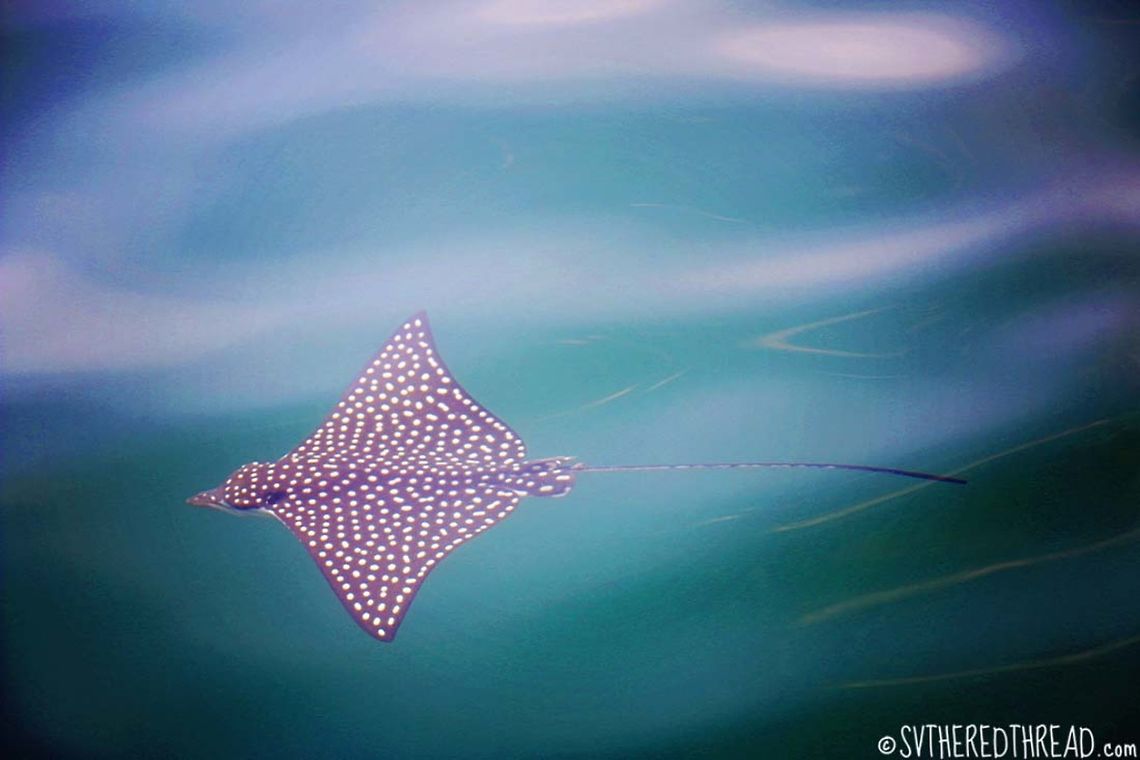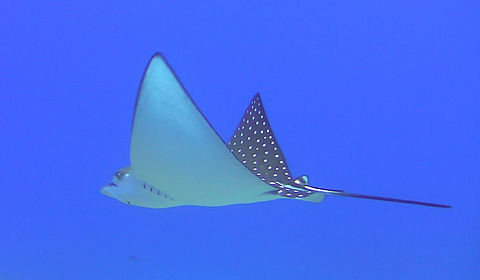 Country intro
Country intro
Soaring in Bahia de Manzanillo
The eagle ray is a spectacular creature found soaring through warm ocean waters around the globe. It may be observed independently or within a school and is found in open waters up to 200 feet deep. It may also be found in shallower bays, such as the one where this photo was taken. Eagle rays can grow to be immense in size, weighing over 500 pounds and spanning nearly 10 feet. When pursued, they can leap elegantly out of the water and appear to be flying. Among other things, their diet consists of clams, shrimp, and squid.

The spotted eagle ray is a cartilaginous fish of the eagle ray family, Myliobatidae. It can be found globally in tropical regions, including the Gulf of Mexico, Hawaii, off the coast of West Africa, the Indian Ocean, Oceania, and on both coasts of the Americas at depths down to about 80 meters . The rays are most commonly seen alone, but occasionally swim in groups. Rays are ovoviviparous, the female retaining the eggs then releasing the young as miniature versions of the parent.
This.. more

comments (2)